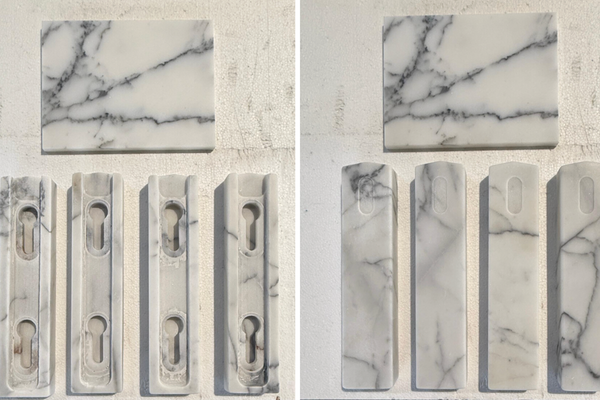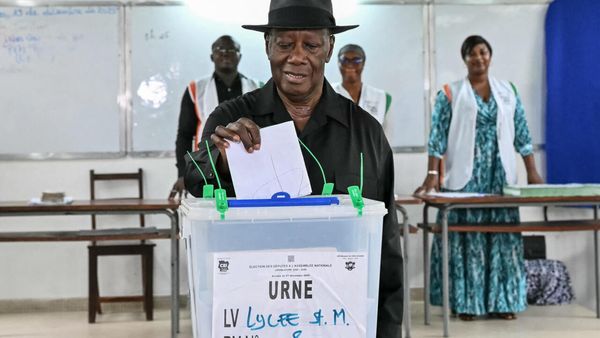A total of 3,559 children were adopted in India between April 2020 and March 2021, as per official adoption data. These included 3,142 adoptions within the country and 417 abroad. In the previous year, 3,745 children were adopted. Taking note of the abysmal adoption rate in the country, the Supreme Court on April 12 admitted a petition seeking to simplify the legal process for the adoption of children in India.
What does the latest adoption plea state?
The Supreme Court on April 12 issued a notice to the Centre on a petition filed by an NGO ‘The Temple of Healing’, represented by petitioner Piyush Saxena. In his representation to the court, Mr. Saxena said, “As per the data available in the public domain, there are only 4,000 child adoptions annually but till last year we had three crore orphan children, in the country. There are several infertile couples who are willing to have a child.”
He further submitted before the court that Child Adoption Resource Information and Guidance System may appoint a few trained “adoption preparers” along the lines of the Tax Preparer Scheme of 2006 to help prospective parents complete the complicated adoption paperwork.
The real scenario
According to the United Nations Children’s Fund (UNICEF), India has 2.96 crore orphaned or abandoned children. In its annual report 2020-21, the Ministry of Women and Child Development noted that 2.56 lakh children were living in 7,164 child care institutions (CCIs) in the country. Following a Supreme Court directive to States to explore the possibility of reuniting these children in care institutions with their birth families as a precaution against the pandemic, 1.45 lakh children were reunited with their birth families.
Several, however, are still waiting for a secure home and promising future.
For instance, India recorded the lowest number of cumulative adoptions between 2020 and 2021 (3,559) since 2013, according to Central Adoption Resource Authority (CARA) data. The coronavirus pandemic is regarded as the primary reason for this drop in adoptions in the country between 2019 and 2021.

A study on estimates of children affected by the pandemic, published in The Lancet Child & Adolescent Health in February this year, noted that 19 lakh children were orphaned or lost a caregiver to COVID in India between March 2020 and October 2021. The study defined orphanhood as the death of one or both parents; or the death of one or both custodial grandparents.
From February to April, there was an 8.5-times increase in the number of children orphaned or losing caregivers in April (43,139 more children than March total) compared with March (5,091 more children than February), another Lancet study highlighted.
Rejecting claims, the Centre maintained that the number of children orphaned during COVID in India was far lower, at 1.53 lakh. The data was attributed to the National Commission for Protection of Child Rights from its Bal Swaraj portal.
In a response in Parliament, the Centre also said only 3,890 Covid orphans were registered with the Ministry of Women and Child Development as of February 5.
What is CARA?
The Central Adoption Resource Authority (CARA), a statutory body of the Ministry of Women and Child Development (MoWCD), deals with the adoption of orphaned, abandoned, and surrendered children through its associated or recognised adoption agencies. It was set up in 1990.
As per its official website, CARA functions as the nodal body for the adoption of Indian children and is mandated to monitor and regulate in-country adoptions.
The nodal body is also designated as the central authority to deal with inter-country adoptions as per the provisions of the Hague Convention on inter-country Adoption, 1993.
The convention seeks to protect children and their families against the risks of illegal or immature operations abroad. India became a signatory to this convention in 2003.
A look at adoption rules in India.
What is adoption in legal terms?
Adoption is the formal process through which a child is permanently separated from his biological parents to become the lawful child of his adoptive parents. The adopted child enjoys all rights, privileges and responsibilities attached to a biological child.
In India, two legislations deal with the adoption of a child:
1. The Hindu Adoption and Maintenance Act, 1956 (HAMA)
2. The Juvenile Justice (Care and Protection of Children) Act, 2015. This includes Juvenile Justice (Care and Protection of Children) Model Rules, 2016 and Adoption Regulations, 2017.
The fundamental principles that govern adoption state that the interests of the child are most important and preference is to be given to place the child in adoption with Indian citizens with “due regard to the principle of placement of the child in his socio-cultural environment, as far as possible”.
Who can be adopted?
An orphan, abandoned, or surrendered child who has been declared legally free for adoption by the Child Welfare Committee (CWC) can be adopted. This only happens under the provisions of the JJ Act 2015.
A child of a relative — paternal uncle or aunt, a maternal uncle or aunt or paternal and maternal grandparents — can be adopted.
According to CARA, children of the spouse from earlier marriage surrendered by the biological parent(s) can also be adopted by the step-parent.
Who can adopt?
The Ministry of Woman and Child Development states that irrespective of marital status and whether or not they have a biological son or daughter, a person can adopt if:
1. The prospective adoptive parent (PAP) is physically, mentally stable, financially capable and should not have any life-threatening medical condition,
2. In the case of a married couple, two years of stable marital relationship and consent of both spouses are required for adoption. The composite age of the married couple should not exceed 110 years,

3. While a single woman can adopt a child of any gender, a single male is not eligible to adopt a girl child. The age of a single parent should not exceed 55 years,
4. The minimum age difference between the child and either of the prospective adoptive parents should not be less than 25 years,
5. The age criteria for prospective adoptive parents is not applicable in the case of adoptions by relative or step-parent,
6. Couples with three or more children are not considered except in the case of adoption of children with special needs or hard-to-place children.
What are adoption rules under Hindu Adoption and Maintenance Act (HAMA)?
Under the Act, a Hindu parent or guardian can give a child in adoption to another Hindu parent. Also, a prospective parent can adopt a male child if he does not have any male child or male grandchild or can adopt a female child if he does not have any female child or female grandchild. Section 8 of he Act states that any female Hindu who fulfils other requirements and is not married (unmarried, divorcee or widow) can adopt a son or daughter.
For single adoptive parents, Section 11 of the Act states that if the adoption is by a male and the person to be adopted is a female, the adoptive father should be at least 21 years older than the child. If the adoption is by a female and the person to be adopted is a male, the adoptive mother should be at least 21 years older.
The adoption process is completed with a registered adoption deed through court after compliance with all provisions under the Act.
In special cases, the court’s permission has to be secured for adoption. This has to be done in case the parents of the child are dead or have abandoned the child. In case the parentage of the child is not known or parents are declared mentally unwell, the court has to be informed for permission.
The Act does not allow the adoption of an orphaned, abandoned or surrendered child who is in the care of any specialised adoption agency (SSA) or child care institution. Inter-country adoptions don’t come under the purview of this Act.
What are adoption rules under Juvenile Justice (Care & Protection of Children) Act?
Unlike HAMA, a couple or a single parent can adopt an orphan, abandoned or surrendered child who has been declared legally free for adoption by the Child Welfare Committee (CWC), irrespective of their religion. Up to 18 years of age, children can be adopted under this Act.
The JJ Act also allows the adoption of same-sex children — parents of a biological or adopted child can adopt another child of the same sex. Prospective parents, living in India or abroad, can adopt children of their relatives. Under the JJ Act, a single or divorced person can adopt, but a single male is not allowed to adopt a girl child.
Specialised Adoption Agency (SAS) carries out a home study to ascertain if a person is eligible to adopt a child and the process concludes with an adoption order.
After adoption, SAS and the Authorised Foreign Adoption Agency (AFAA) have to undertake follow-up of the adoptive family for two years.
What is the formal process of adoption in India?
CARA functions as the nodal agency for adoption in India. A database of children and registration of prospective parents is done on a centralised Child Adoption Resource Information and Guidance System (CARINGS), which is maintained by CARA.
As per the 2018-19 annual report, CARINGS provided a platform to around 469 specialised adoption agencies, 625 district child protection units and 34 state adoption resource agencies in India.
An orphaned or abandoned child must be brought before the district child welfare committee and placed in a CCI. If biological parents or family are not tracked, the child welfare committee has to deem the child legally free for adoption. The district child protection unit then links them to an adoption agency and the child is registered with CARA. A medical report is prepared and the child.
Application process: To adopt a child, a person has to first register online with an authorised agency. They are required to upload their application to specialised adoption agencies or SAA along with other documents on CARINGS. A registration number is generated once the application is submitted.
Registration has to be done again in case of failure to upload all documents within 30 days from the date of signing up.
This is followed by a home study of the prospective parent and is conducted by a social worker. This report has to be uploaded to the website once it is complete. As per Adoption Regulations 2017, it remains valid for three years and can be used as a basis for adoption anywhere in the country.
Based on the home study report, SAA declares a person eligible for adoption.
Adoption: The next step involves sharing profiles of legally free children with prospective adoptive parents. But this depends on the seniority of a prospective adoptive parent which is considered from the date of uploading of documents and completion of the registration process.
A child has to be “reserved” within 48 hours for possible adoption. The adoption committee is then required to “match” the prospective parent with the child within 20 days. The committee can also organise a meeting of prospective parents with the child.
Prospective adoptive parents are required to sign the child study and medical examination reports. If they are not selected for adoption, the reason is recorded in the centralised portal.
Earlier, the SAA and prospective parent had to file a petition in the designated court regarding the final decision on adoption. This, however, changed when the powers were given to the District Magistrate to grant final approval.
After filing of the petition, the child is kept in pre-adoption foster care by prospective parents.
Post-adoption: The SAA will apply for a birth certificate, with the names of adoptive parents as parents and the date of birth as recorded in the adoption order.
There will be post-adoption follow-up with the adoptive family for two years (four visits) from the date of pre-adoption foster placement. In case of any issue, the SAA will take appropriate action.
What about adoptions from India?
While most of the process is similar for non-resident Indians wishing to adopt from India, there are a few differences. The counselling and preparation of the home study report are done by an authorised foreign adoption agency. In the case of a country which is not a signatory to the Hague Adoption Convention, Indian diplomatic missions help with the application process.
The prospective adoptive parents can then reserve one of the referred children within 96 hours. If the prospective adoptive parents reserve one of the children shown, they can accept the child by signing the child study and medical examination report of the child within 30 days from the date of reservation.
CARA then issues a pre-adoption ‘no objection’ certificate for foster care, followed by a court adoption order. A final NOC certificate from CARA or a conformity certificate under the adoption convention is mandatory for a passport and visa to leave India.
After initial foster care, the prospective adoptive parents get final custody as soon as the passport and visa are issued to the child after the issue of an adoption order from the court.
For follow-up, the authorised adoption agency or Indian diplomatic mission will report the progress of the adopted child for two years from the date of arrival in the receiving country.
Why are adoption rates low in India?
The gap between prospective adoptive parents and children that are up for adoption has been staggering. Around 28,000 prospective parents have currently registered to adopt but only 2,200 have been declared legally free for adoption by the child welfare committee.
People willing to adopt have been demanding reforms to expedite the process of adoption. Over 300 people last year wrote to the ministry about reforms to bring in more children child care institutions into the adoption pool (legally free for adoption).
Speaking on the condition of anonymity, a CARA representative had earlier told The Hindu that the delay was due to less number of children in the adoption pool. The official also highlighted that of the children available for adoption, the most desired category — children between 0 and 2 years of age with with no form of disability — are minuscule.







